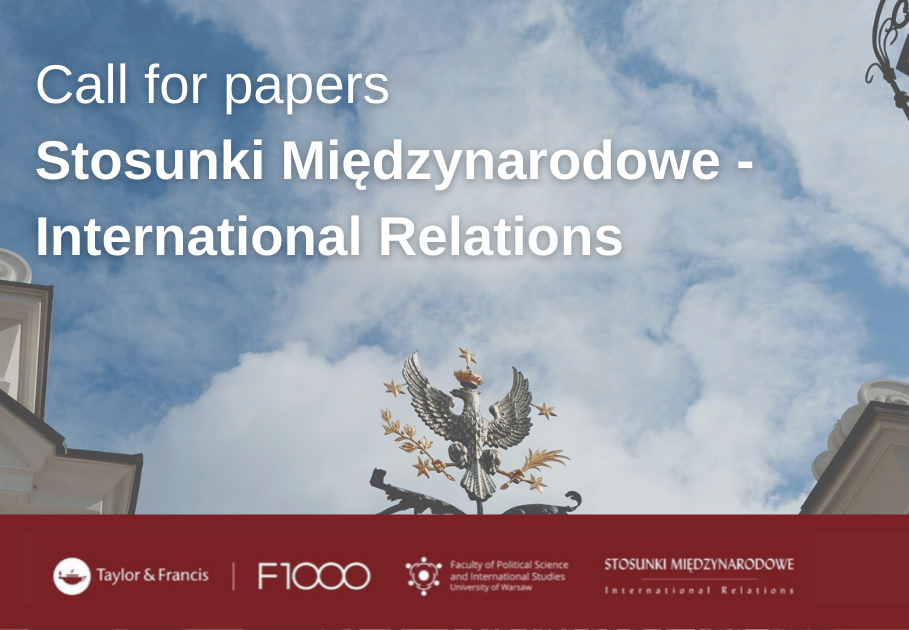O czasopiśmie
Cele i zakres czasopisma
Zasady Etyki
Polityka Prywatności (RODO)
Zespół Redakcyjny i Rada Redakcji
Kontakt
Bieżący numer
Archiwum
Dla Autorów
Call for Papers
Ogólne wytyczne dla Autorów
Struktura tekstów
Wymogi edytorskie
Procedura recenzowania
Zasady recenzowania
Dla Recenzentów
Procedura recenzowania
Zasady recenzowania
Ogólne wytyczne dla Recenzentów
Zasady publikowania/
Kodeks etyczny
Kontakt
ARTYKUŁ NAUKOWY
The Muslim Brotherhood and the Crisis in the GCC:
Roots, Issues and Implications
1
University of Gdańsk
Data publikacji: 30-06-2016
Stosunki Międzynarodowe – International Relations 2016;52(2):355-365
SŁOWA KLUCZOWE
Muslim BrotherhoodGulf Cooperation CouncilSaudi Arabia–QatarconflictArab Gulf statesinternational relationsPersian Gulf
STRESZCZENIE
After the Arab Uprisings of 2011, the position of the Muslim Brotherhood in the
Middle East changed dramatically, especially in the Persian Gulf subregion. For
decades, the Muslim Brotherhood was a close ally of the Gulf monarch families
because it provided a common narrative against Naser’s Pan-Arabism. The Muslim
Brotherhood was also legitimising the monarch families’ right to rule. In the
post-Arab Uprisings era the organisation is seen as a rival of those families and
a challenge for their legitimacy to rule as it calls for political changes.
The only exception was Qatar, which supported the Muslim Brotherhood
financially, militarily and politically in Egypt and elsewhere. Because of that
Qatar found itself at odds with the other Gulf Cooperation Council members,
most notably Saudi Arabia, the UAE and Bahrain. Furthermore, the Qatar-based
Al-Jazeera network spread the Brotherhood’s agenda, which was based on the call
for changes due to the fact that the three abovementioned states deemed the Muslim
Brotherhood a terrorist organisation. All these incidents led Saudi Arabia, the UAE
and Bahrain to recall their ambassadors from Doha.
Not only the Muslim Brotherhood was under pressure. It became clear that
other Islamist organisations in the region had suffered from some setbacks that had
affected their overall stance and performance throughout the Middle East (i.e. Hizb
an-Nahda in Tunisia, Hamas in the Palestine Autonomy, the Muslim Brotherhood
in Egypt). What is emphasised by analysts is that this conflict between Qatar and
Saudi Arabia was a battle for regional leadership, not the first one and surely not
the last (the war in Syria, the Islamic State, etc.).
The aim of the paper is to present the history of the mutual relations between
the Muslim Brotherhood and the Arab Gulf states, describe causes which led to
the conflict, the divisions created by the conflict and the consequences of the crisis
for the organisation.
Udostępnij
ARTYKUŁ POWIĄZANY
Przetwarzamy dane osobowe zbierane podczas odwiedzania serwisu. Realizacja funkcji pozyskiwania informacji o użytkownikach i ich zachowaniu odbywa się poprzez dobrowolnie wprowadzone w formularzach informacje oraz zapisywanie w urządzeniach końcowych plików cookies (tzw. ciasteczka). Dane, w tym pliki cookies, wykorzystywane są w celu realizacji usług, zapewnienia wygodnego korzystania ze strony oraz w celu monitorowania ruchu zgodnie z Polityką prywatności. Dane są także zbierane i przetwarzane przez narzędzie Google Analytics (więcej).
Możesz zmienić ustawienia cookies w swojej przeglądarce. Ograniczenie stosowania plików cookies w konfiguracji przeglądarki może wpłynąć na niektóre funkcjonalności dostępne na stronie.
Możesz zmienić ustawienia cookies w swojej przeglądarce. Ograniczenie stosowania plików cookies w konfiguracji przeglądarki może wpłynąć na niektóre funkcjonalności dostępne na stronie.



